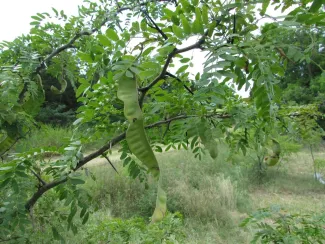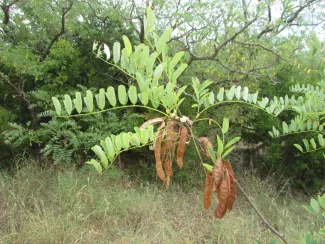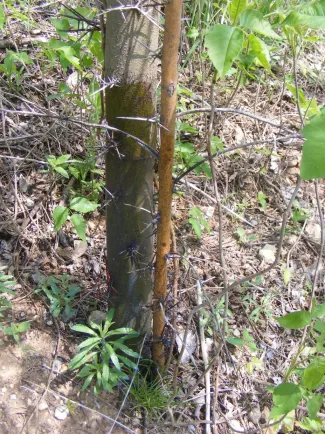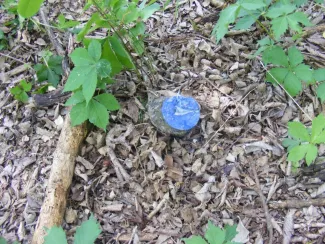Few trees garner more attention than thorn-filled locust trees, and though honey and black locust are native to Oklahoma, they can also be problematic.
First, it’s important to know that locust trees do have a modest list of benefits. For starters, these trees were and occasionally are planted for windbreaks, in shelterbelts, for honey production, and for soil stabilization projects. They also serve as hosts to many beneficial insects and are fair to good nesting and foraging trees for species like woodpeckers and warblers.
As suggested in the name, the pulp within honey locust pods is quite sweet and something that white-tailed deer are quite fond of. Overall, a large number of animals benefit from locust trees for food and cover, including bobwhite quail. But the trees also have a negative side too.

Honey locust have twisted, flat legumes and branched thorns.

Black locust have clusters of papery legumes and stout spines at the base of the compound leaves.
Perhaps the greatest downside is their ability to grow fast and spread quickly. They are notorious for establishing new trees through root sprouting, especially black locust, and their year-to-year seed production can be vast. Well-managed habitats rarely have issues, especially habitats managed with frequent fire. In general, however, pasturelands, cleared forestlands, and rangelands are all vulnerable to an invasion prompting the need for control.
Thankfully, prescribed burning can be used to help prevent against an invasion within native prairies. Fire can also be used to top-kill larger trees if enough ground fuel is present. However, locusts readily re-sprout after fire, so one fire alone, or even two, will not be sufficient to rid a habitat of the trees or keep them out entirely. Instead, a consistent burning regime every 1-3 years is best as this will continue to top-kill young trees and exhaust the seedbank.
Chemicals are also an option to control locust trees. Options abound when it comes to deciding which chemical to use and by which method.
Foliar applications may be feasible when trees are five feet tall or less, but basal bark or cut stump applications are usually the best choice. The hack and squirt method can also be used, but thorns can make the task difficult, if not a bit painful. Whatever method is chosen, monitoring the site for re-sprouting and following up with repeated applications is usually required.
The below table includes several options when locust control is desired or needed. In addition, your local private lands biologist can be a great source of information before, during, and after any habitat improvement project.


